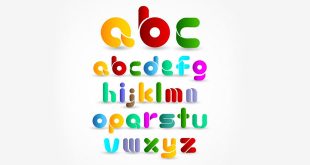Pronoun Usage
Personal Pronouns
Personal pronouns stand in place of names of people or things. They are straightforward forms of pronouns and can be further classified into:
- Subjective Pronouns
- Objective Pronouns
- Prepositional Pronouns
- Disjunctive Pronouns
- Weak Pronouns
Subjective Pronouns
These pronouns are used in place of the subject used in the clause. For example: ‘She works in London‘. ‘I like to eat chips’. ‘They bought a new car last month.’ These subjective pronouns can be further classified as:
- Second Person Formal & Informal Pronouns — These pronouns were common in the Shakespearean era. Here, words like ‘thou’, ‘thy’, etc. are used. Examples of these pronouns can be Oh thy bleeding piece of earth! O Wild West Wind, thou breath of Autumn’s being…
- Inclusive & Exclusive Pronouns — These pronouns help us find whether the audience is included or not. Examples can be as follows: We have a party to attend this evening. They have not given a clear picture of what happened to us.
- Intensive Pronouns — These pronouns are also known as emphatic pronouns since they re-emphasize a noun which is already referred to in the sentence. Examples can be as follows: You yourself are responsible for this mess! I did it myself
Objective Pronouns
They are used when a noun is used as an object in the sentence. Personal objective pronouns are: me, you, him, it, us, etc. For example: ‘John likes me but not her.’ ‘She asked him to help with the work.’
- Direct & Indirect Object Pronouns — The direct and indirect pronouns are used to explain a sentence in the same form. For example:
Mary loves him – direct object; Mary sent him a letter – indirect object - Reflexive Pronouns — these pronouns are used when they refer back to another word in the sentence or when the thing acts on itself. Examples are:
Krish cut his hand himself.
I worked myself to the bone. - Reciprocal Pronouns — these pronouns refer to an interchangeable relationship or action. Examples are:
Rita and John do not like each other.
The two sisters have love on one another.
Possessive Pronouns
Possessive pronouns are those which help indicate ownership or belongingness of a thing to someone. These pronouns do not require apostrophes unless the word in question is a contraction of it is and it has, in which case the word becomes it’s. For example: ‘Those shoes are mine’. ‘Look over there, those seats are yours.’
Demonstrative Pronouns
Demonstrative pronouns are normally used to point out things or to distinguish a particular object from the rest. For example: ‘Mary will take these forms back home.’, ‘Bring me that cup’.
Indefinite Pronouns
Indefinite, in very simple and obvious terms, means something that is not definite. These pronouns refer to general categories of people and nothing specific or particular. For example: ‘Someone can solve it if they know the right way’. ‘Everyone looked at me.’
- Distributive pronouns — They are used to refer to groups of members separately rather than collectively.
- To each his own.
- Each boy was given a present.
- Negative pronouns — These pronouns refer to the non-existence of a person or a thing. For example:
- No one is thinking of attending that marriage.
- Nobody wants to stay alone at home during festivals.
Relative Pronouns
Relative pronouns help refer to previously mentioned things or people. These pronouns help in linking two clauses and begin with a subordinate clause. For example: ‘He is a professor who works in Cambridge University.’ ‘I hate that tree which gives out sticky smells.’
Interrogative Pronouns
These interrogative pronouns are usually found in questions. They are used to ask questions or what the thing is meant. For example: ‘Which jacket should I wear?’, ‘What are you staring for?’
Pronouns make written texts look short and crisp and also work towards making spoken language more interesting and organised. These parts of speech, when used effectively, do not make the phrase ambiguous or out of place; these only add meaning and value to the expression. It’s tiresome to use a word several times and use of these pronouns avoids such repetition of nouns.
 Class Notes NCERT Solutions for CBSE Students
Class Notes NCERT Solutions for CBSE Students


